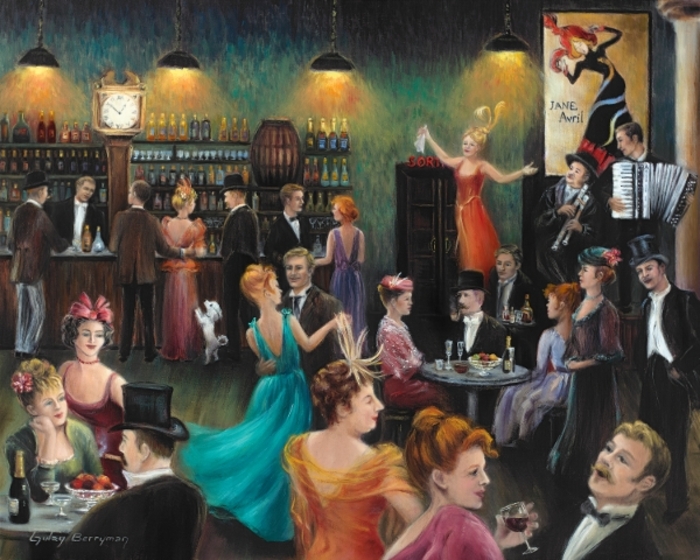Bal Musette a Montmartre
Bal Musette a Montmartre
by Gulay Berryman | 12” x 16” - Fine Art Print
Giclee on Canvas Reproductions also available:
During the 19th Century, Frenchmen from the central province of Auvergne became the principal proprietors of the cafes and brasseries of Paris which remains the case to this day. They concentrated on the 5th (Latin Quarter) , 12th, 18th and 19th Arrondissements of Paris – the latter two districts forming the hill of Montmartre. They brought with them a music and dance from Auvergne known as “la bouree” which was accompanied by music from the “cornemuse” - a variation of the bagpipe. The term “musette” thus came from the “cornemuse.” These musicians were joined by accordion players who originally came from Italy. The musette dances which evolved were based primarily on the tango, waltz or pasodoble. Going to a bal musette became a very popular form of social entertainment and these were attended by the literary and artistic avant-garde of France and immortalized in the paintings of Toulouse-Lautrec and Manet among others.
Although the music later evolved to include jazz and blues, going to a bal musette remained a hub of popular entertainment until the very end of both World Wars well into the mid-20th Century. During his 1922-1923 residence in Paris, Ernest Hemingway and his wife Hadley lived just above a “bal musette” at 74 rue du Cardinal Lemoine (not far from the Place de la Contrescarpe). It was called the “Bal au Printemp”’ and Hemingway makes reference to it in his book ‘A Moveable Feast’ and it was also the inspiration for one of the scenes he describes in ‘The Sun Also Rises.’




